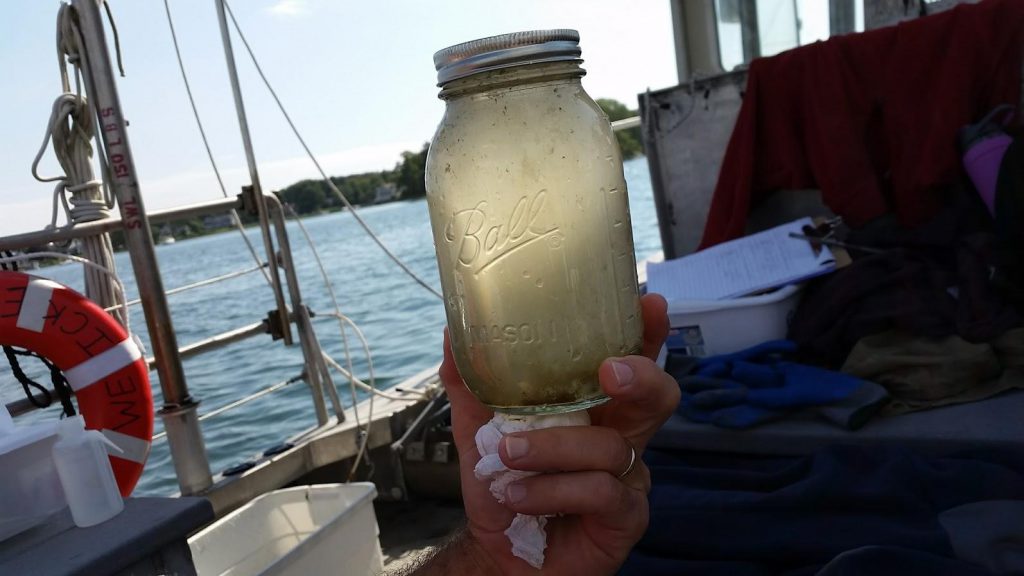Searching for the Elusive Plastic Pollution Off Connecticut’s Coast

Vincent Breslin, a professor of chemistry at Southern Connecticut State University, holds up a jar filled with water from Long Island Sound. Breslin is testing the water for plastic contamination: tiny microbeads, sometimes invisible to the naked eye.
Photo credit: Patrick Skahill
Plastic today is everywhere: in our bottles and cell phones, our grocery bags, and our trash. Some plastic garbage is so small, it’s impossible to see with the naked eye: tiny microbeads, which have been banned from some products because of their environmental impact. WNPR went looking for them in the waters off Connecticut’s coast.
The R/V Lowell Weicker is a research vessel about 40 feet long. Its engine rumbled as we pulled out of the harbor at UConn’s Avery Point campus.
On board with me was Vincent Breslin, a professor at Southern Connecticut State University. We were headed to Mystic Harbor, hunting for a very specific type of plastic pollutant: microbeads.
“These are the microbeads that are typically found in cosmetic products,” Breslin said. “Hand soaps, face lotions, exfoliants.”
